
Prelude to Civil War
This book examines the key events in American history from the 1607 arrival of the British colonists through the 1775-81 Revolutionary War, the creation of a new nation at the 1787 Constitutional Convention, its amazing rise to global prominence by 1840, followed by internal insurrection and warfare in 1861. It argues that the seeds of Disunion are evident from the beginning, once the South bets its entire economic future on the ongoing expansion of a slave-based agricultural economy. This conflicts with the North’s commitment to a modern industrialized model along with its passage of racist “black codes” aimed at “cleansing” all negroes from its domain. Up until 1845 “political compromises” allow both regions to prosper, as America’s landmass crosses the Mississippi River. However, tensions accelerate after the 1846-47 Mexican War opens new western territories coveted by both sections. Southern demands to open new slave plantations are met by Northerners committed to preserving all new land for “free white men and free labor.” This outcome would end the South’s ability to auction off its inventory of “excess slaves,” the principal source of its total wealth. Efforts to find a compromise fail and Lincoln’s victory in the 1860 election (with 39% of the popular vote) results in a slavery ban in the west, secession by the South and the Civil War.
Book Sections
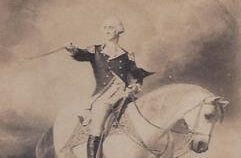 Section #1
Section #1America’s years as a British Colony end with The Revolutionary War
- 1 – The Earliest Settlers Appear
- 2 – Comes The Scourge Of Slavery To The Colonies
- 3 – The Reformation & The Enlightenment Challenge Entrenched Institutions
- 4 – America’s Foundational Churches Take Hold In The Colonies
- 5 – Britain and France Begin Their Battles For Global Hegemony
- Interlude 1: Interlude: The American Landscape in 1760
- 6 – The Declaration Of Independence
- 7 – The Revolutionary War
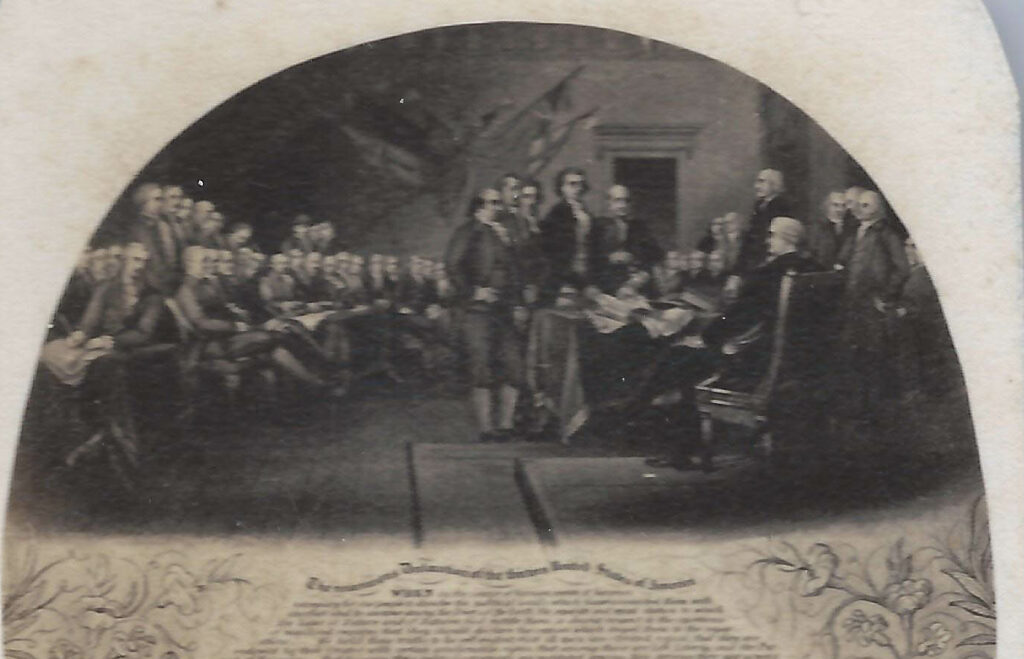 Section #2
Section #2A new Constitution is adopted and government operations start up
- 8 – Debt Plagues The New Congress Of The Confederation
- 9 – A New Constitution is Approved For The United States
- Interlude 2: Interlude: The American Landscape in 1790
- 10 – The Plight Of Those Enslaved
- 11 – Blacks Begin Their Uphill Struggle Toward Justice
- 12 – George Washington’s First Term
- 13 – A “Bill Of Rights” Is Added To The Constitution
- 14 – The Supreme Court Convenes For The First Time
- 15 – Hamilton’s Capitalism Sets The Economy In Motion
- 16 – The French Revolution Overthrows Louis XVI
- 17 – America’s Westward Expansion Picks Up Momentum
- 18 – Washington’s Second Term
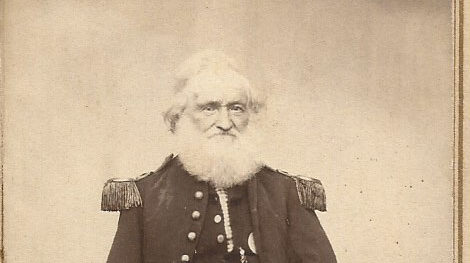 Section #3
Section #3Foreign threats to national security end with The War Of 1812
- 19 – Napoleon Becomes First Consul In France
- 20 – John Adams Presidency
- 21 – Thomas Jefferson First Term
- 22 – John Marshall’s Supreme Court Asserts Its Authority In Marbury v Madison
- 23 – Toussaint’s Slave Rebellion In Haiti Ends With Blacks In Power
- 24 – The Louisiana Purchase Doubles America’s Landmass
- 25 – The Lewis & Clark Expedition Maps A Route To The West Coast
- 26 – Violence Remains A Norm For Resolving Public Conflicts
- 27 – Jefferson’s Second Term
- 28 – Burr’s Filibustering Campaign Signals U.S. Colonial Intentions
- 29 – Le Jour de Gloire Arrives For Napoleon And France
- 30 – British Acts Of War Lead to The Ruinous “Embargo Act”
- 31 – James Madison’s First Term
- 32 – The War Of 1812 Begins
- 33 – Napoleon Reaches His Zenith Before A Crushing Loss In Russia
- 34 – America Wins The War Of 1812
- 35 – The End Of The Napoleonic Wars
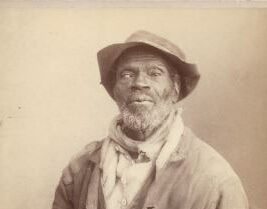 Section #4
Section #4Early sectional conflicts over expanding slavery lead to the Missouri Compromise Of 1820
- 36 – Madison Concludes Second Term
- 37 – Westward Expansion Re-Opens Conflicts Over The Destiny Of America’s Blacks
- 38 – James Monroe’s First Term
- 39 – America’s First Economic Depression
- 40 – The “Two Floridas” Acquired From Spain
- 41 – The Marshall Court Issues Three Landmark Legal Rulings
- 42 – A Crisis Over Slavery Is Averted By The “1820 Missouri Compromise”
- Interlude 3: Interlude: The American Landscape In 1820
- 43 – The Black Experience In 1820
- 44 – A White Abolitionist Movement Gets Under Way
- 45 – Another Bloody Slave Uprising Occurs
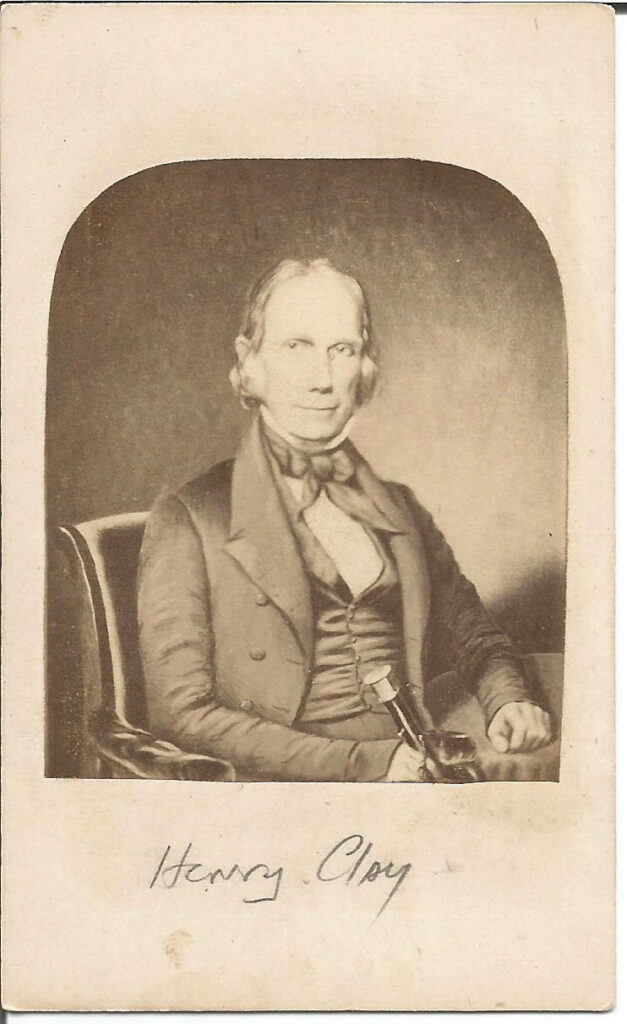 Section #5
Section #5A new Whig Party favors industrialization over the Democrat’s agrarian economy
- 46 – James Monroe’s Second Term
- 47 – Monroe Issues His “Hands Off The Americas” Doctrine
- 48 – Political Fault Lines Over Geography And Slavery Are Amplified In The 1824 Presidential Race
- 49 – A Troubling House Vote Hands The Presidency To JQ Adams
- 50 – John Quincy Adams Term
- 51 – Prospects Grow For A “Second Political Party System”
- 52 – Pressure Continues On The Eastern Tribes To Abandon Their Homelands
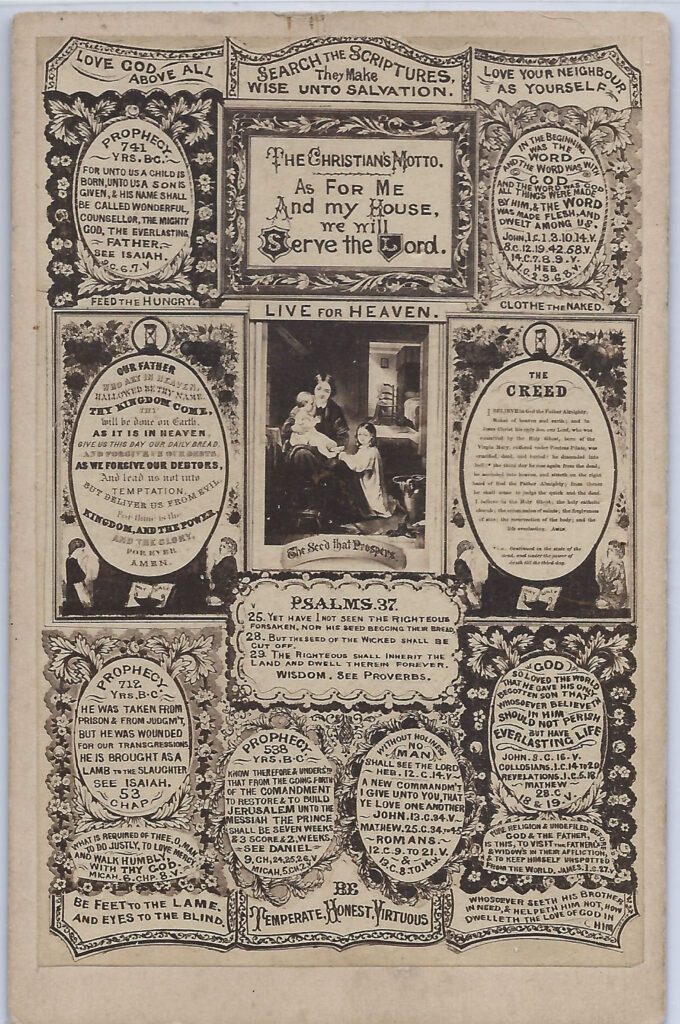 Section #6
Section #6The Second Religious Awakening sparks early moral concerns about slavery
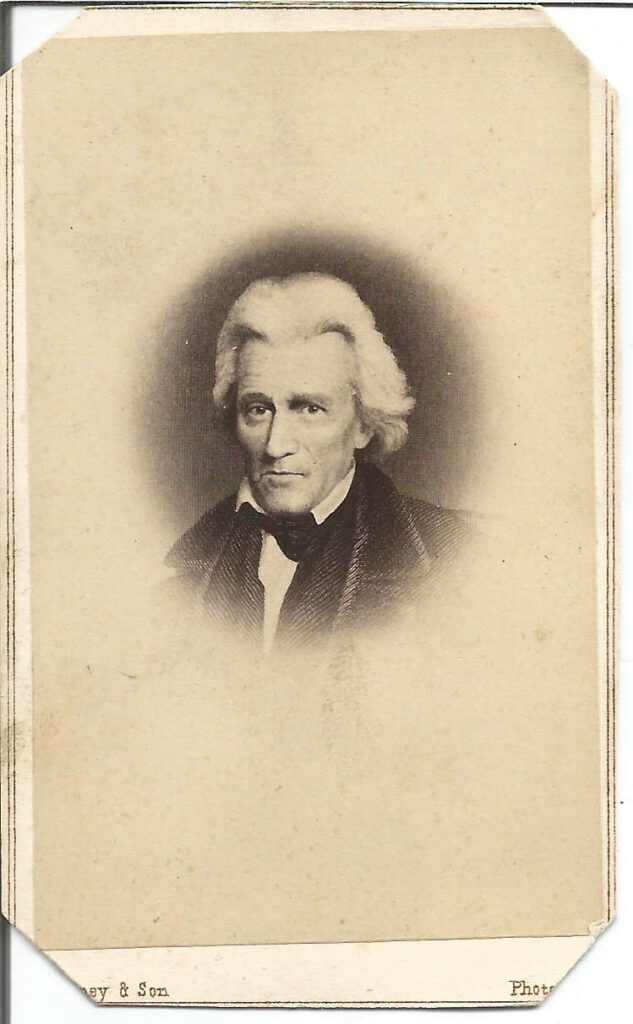 Section #7
Section #7A populist western president stands against Nullification and for tribal relocation
- 55 – Political Party Restructuring Precedes The 1828 Election
- 56 – Andrew Jackson’s First Term
- 57 – John Calhoun Tries To “Nullify” Federal Authority
- 58 – Black Abolitionist David Walker Cries Out For Justice
- 59 – The White Abolitionist Movement Finds Its Ongoing Leaders
- 60 – A Famous “Value Of The Union” Senate Debate Touches On The States’ Rights To Slavery
- 61 – Jackson Splits With Calhoun And Sacks His Entire Cabinet
- 62 – The French Visitor Alexis de Tocqueville Analyzes The American Spirit And The Regional Tensions Around Slavery
- 63 – Nat Turner’s Slave Rebellion Terrorizes The South And Prompts Savage Retribution
- 64 – More Tribal Land Evictions Triggers The Blackhawk War
 Section #8
Section #8Efforts to end federal debt, close the U.S. Bank and restore hard currency lead to recession
- 65 – Jackson Begins His Assault On The Banking And Monetary Systems
- 66 – Jackson Ends The Nullification Threat From South Carolina
- 67 – Four Parties Vie For The Presidency In 1832
- 68 – Andrew Jackson’s Second Term
- 69 – Jackson “Kills” The Second Bank And Pays Off The Federal Debt
- 70 – Britain Abolishes Slavery
- 71 – The American Anti-Slavery Society Is Founded
- 72 – Abolitionists Are Met By Attacks In The North And South
- 73 – The Southeastern Tribes Are Evicted Along The “Trail Of Tears”
- 74 – JQ Adams Refuses To Comply With A House “Gag Order” To Silence Anti-Slavery Petitions
- 75 – Americans Under Sam Houston Annex Texas
- 76 – Jackson’s “Specie Circular” Triggers A Monetary Crisis
- 77 – Roger Taney Becomes Chief Justice Of The Supreme Court
- 78 – Andrew Jackson’s Enduring Legacy
- 79 – The Whigs Prepare To Challenge Van Buren For The Presidency in 1836
- 80 – Martin Van Buren’s Term
- 81 – America Suffers An Economic Depression
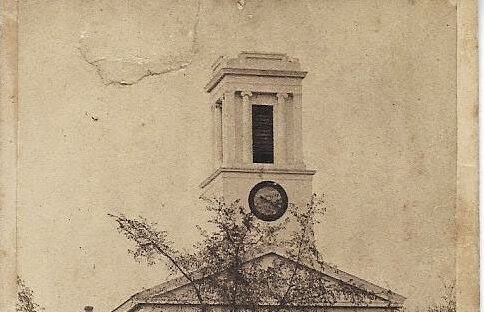 Section #9
Section #9Growing opposition to slavery triggers domestic violence and a schism in America’s churches
- 82 – The South Intensifies Its Defense Of Slavery
- 83 – Abolitionist Editor Elijah Lovejoy Is Murdered By An Alton, Illinois Mob
- 84 – Lovejoy’s Murder Begets A Fatal Vow From John Brown
- 85 – The Mob Behavior In Alton Also Draws A Public Response From Abraham Lincoln
- 86 – Calhoun Again Tries To Rally The South Against The Regional Threats He Sees
- 87 – Politicians Once Again Turn To Violence To Resolve Their Differences
- 88 – Southern Fears Mount Further As The Supreme Court Frees Slaves In The Amistad Affair
- 89 – The Growing Sectional Divide As The Election Of 1840 Looms
- Main St. in Small Town AmericaInterlude 4: Interlude: The American Landscape In 1840
- 90 – The South’s First Cash Crops: Tobacco, Rice, Cotton And Sugar
- 91 – The Breadth Of Slave Ownership In The South
- 92 – Chapter 92:The South’s Second Cash Crop: Breeding And Selling Slaves
- 93 – Selling Slaves
- 94 – Free Blacks Are Making Progress
- 95 – The Political Scene In 1840
- 96 – Abolitionists Enter Politics After An Internal Schism
- 97 – William Henry Harrison’s One Month Presidential Term
- 98 – John Tyler Completes The Presidential Term
- 99 – Tyler Turns Against The Whigs And They Turn Against Him
- 100 – Frederick Douglass Makes His First Great Speech Against Slavery
- 101 – Another Race Riot Breaks Out In Cincinnati
- 102 – Prigg v Pennsylvania Adds To Mounting Tension Over “Fugitive Slaves”
- 103 – The Prigg Decision Prompts Lloyd Garrison To Call For Disunion
- 104 – The Creole Slave Rebellion Leads To Diplomatic And Congressional Conflicts
- 105 – The Webster-Ashburton Treaty Resolves A Series Of Disputes With Britain
- 106 – America’s Drive To Explore The West Picks Up Momentum
- 107 – John Fremont’s First Expedition Reaches The “South Pass”
- 108 – Fremont’s Second Expedition Explores The West Coast
- 109 – The Wilkes Expedition Adds Luster To America’s Global Reputation
- 110 – Two Powerful Black Abolitionists Make Their Voices Heard
- 111 – Public Attitudes Toward Slavery Begin To Shift In The North
- 112 – The Slavery Issue Causes A Schism Within The Protestant Churches
- 113 – James Thornwell & Other Clergymen Offer A Biblical Defense Of Slavery
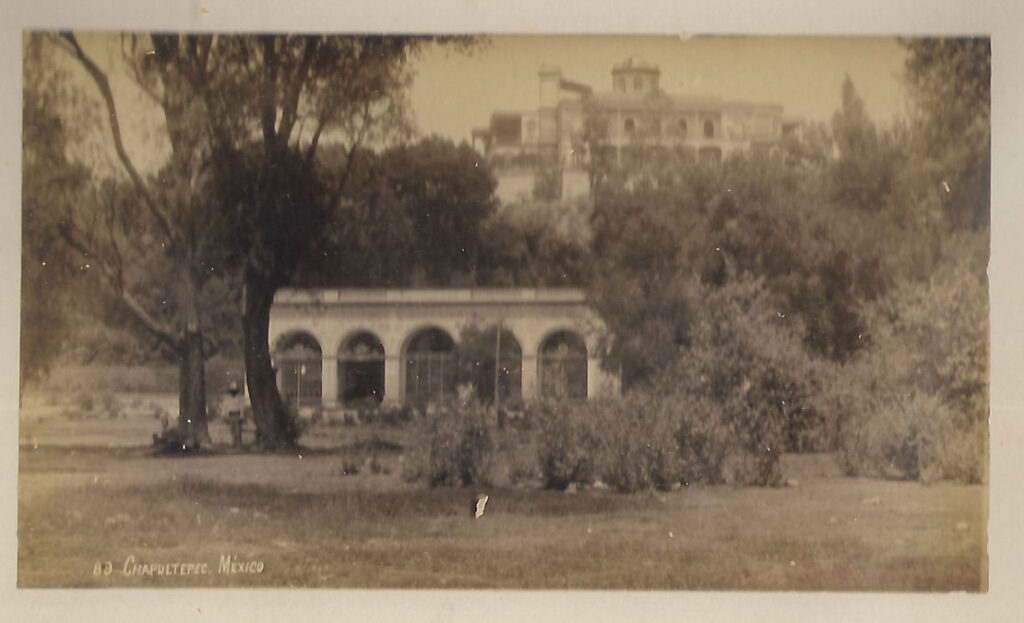 Section #10
Section #10A Manifest Destiny craze results in the Texas Annexation and a victorious war with Mexico
- 114 – The Question Of Texas Annexation Again Assumes Center Stage
- 115 – Three Parties Nominate Candidates For The Pivotal 1844 Election
- 116 – James Knox Polk Term
- 117 – The Republic Of Texas Is Annexed
- 118 – War Breaks Out With Mexico
- 119 – The Oregon Boundary Dispute With Britain Is Resolved
- 120 – Polk Gets His Tariff Bill Approved
- 121 – Americans Occupy California And New Mexico
- 122 – The Wilmot Proviso Is An Existential Threat To The South
- 123 – The War With Mexico Picks Up Momentum
- 124 – Congress Debates The Morality And Implications Of The Mexican War
- 125 – General Zachary Taylor Wins Lasting Fame At Buena Vista
- 126 – Congress Finally Approves A Funding Bill Without A Ban On Slavery
- 127 – Whigs Make Large Gains In The Off-Year Election Of 1846
- 128 – General Scott Moves Inland In The South
- 129 – The Mormons Find Their Home And Support The War
- 130 – General Scott Conquers Mexico City And Ends The War
- 131 – Two Splinter Parties Nominate Their Presidential Candidates Early On
- 132 – Polk Gets The Independent Treasury He Wants
- 133 – Gold Is Discovered In California
- 134 – Political Battles Intensify Over A Proper Peace Treaty With Mexico
- 135 – “Popular Sovereignty” Becomes The Democrat’s Answer To The Wilmot Proviso
- 136 – The Treaty Of Guadalupe Hidalgo Ends The War With Mexico
 Section #11
Section #11The Seneca Falls Conference organizes the fight for gender equality
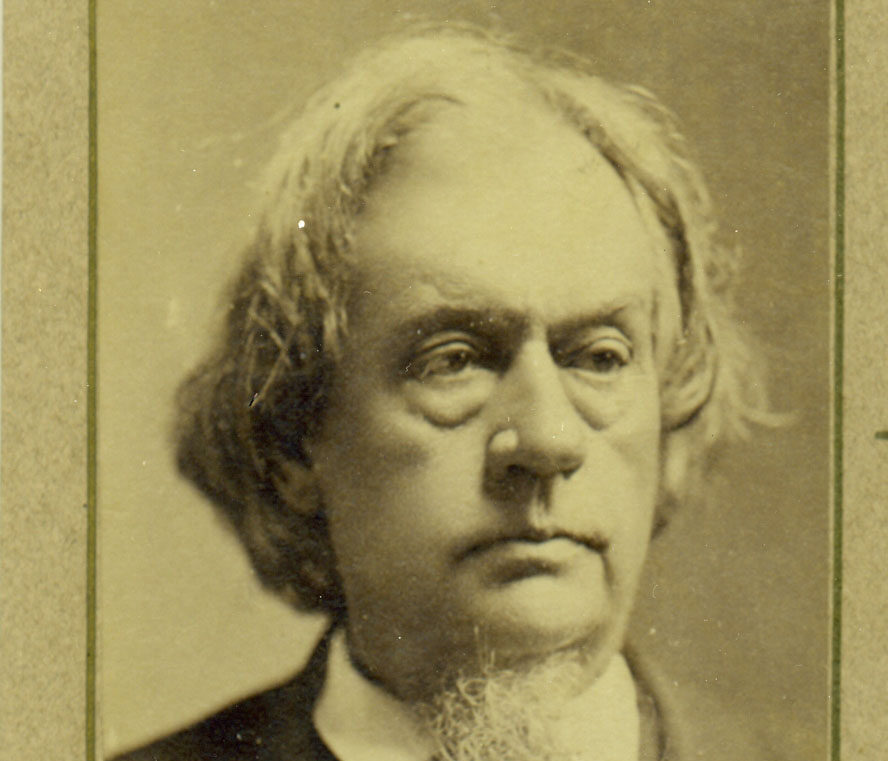 Section #12
Section #12Southerners are alarmed by an apparent Northern wish to ban all blacks from the new West
- 139 – James Knox Polk’s Consequential Presidency
- 140 – The Two Major Parties Select Their Candidates For The 1848 Race
- 141 – A Host Of Splinter Groups Threaten Party Unity
- 142 – Salmon Chase’s New “Free Soil Party” Portends America’s “Third Political System”
- 143 – Zachary Taylor’s Term
- 144 – A Proposed Ban On Slavery In DC Intensifies Sectional Anger In The House
- 145 – Taylor’s Support Of The Wilmot Proviso Shocks The South
 Section #13
Section #13The 1850 Compromise has Democrats backing “popular sovereignty” voting instead of a ban
- 146 – California Adopts A Free State Constitution To Join The Union And President Polk Say He Will Support It
- 147 – Moderate Southern Whigs Stage A Rebellion In The House
- 148 – Clay And Douglas Offer An “Omnibus Bill” To Assuage The South
- 149 – Four Cross Party Factions Emerge On The Slavery Issue
- 150 – Heated Arguments Stymie The “Omnibus Bill”
- 151 – More Public Violence Accompanies The Slavery Debates
- 152 – Pro-Unionists Prevail At The Nashville Convention
- 153 – Talks Proceeds On A Cross-Isthmus Canal In Central America
- 154 – A Filibustering Adventure To Conquer Cuba Is Foiled
- 155 – President Taylor Dies Suddenly
- 156 – Millard Fillmore’s Term
- 157 – Douglas Drives His 1850 Compromise Bills Through Congress
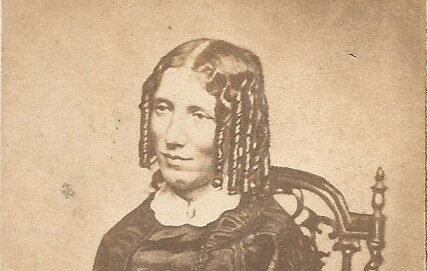 Section #14
Section #14Anti-Slavery sentiment grows due to the Fugitive Slave Act and Uncle Tom’s Cabin
- 158 – Fillmore Offers A “Delayed Inaugural Address” To Congress
- 159 – Two More Southern Conventions Search For A Political Strategy On Slavery
- 160 – Northerners Rebel Against The 1850 Fugitive Slave Act
- 161 – The History Of Run-Away Slaves And Measures To Stop Them
- 162 – An “Underground Railroad” Assists The Runaways
- 163 – Abolitionist John Brown Advances His Plan To Lead A Slave Rebellion In The South
- 164 – Boston Remains The Hotbed Of Resistance To The Fugitive Slave Act
- 165 – Uncle Tom’s Cabin Arouses More Sympathy For Slaves And Runaways
- 166 – Whigs Suffer Losses In Mid-Term Elections
- 167 – Fillmore Embarrassed By Failed Treason Trial In Christiana Runaway Case
- 168 – Free Black Leaders Make Their Voices Heard
- 169 – Southern Intellectuals Ramp Up Their Defense Of Slavery
- 170 – Deeply Flawed “Scientific Studies” Used To Support Black Inferiority
- 171 – Presidential Candidates Chosen Amidst Deep Party Divisions
- 172 – Franklin Pierce’s Term
- 173 – Lemon v New York Asserts A “Once Free Forever Free” Standard
- 174 – Douglas’ Plan To Organize The Nebraska Territory Fails Again In The Senate
- 175 – The March Is On To Build A Trans-Continental Railroad
- 176 – Surveys For Transcontinental Railroad Routes Completed In 1853-54
- 177 – The “Gadsden Purchase” Supports A Southern Route For The Pacific Railroad
- 178 – Filibusterer William Walker Attempts To Create A Republic Of Lower California
 Section #15
Section #15Northerners rebel after the 1854 Kansas- Nebraska Bill reneges on the Compromise of 1820
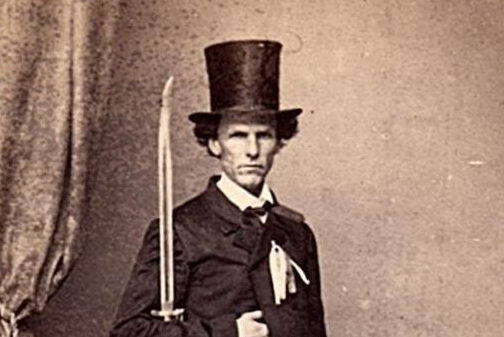 Section #16
Section #16Open warfare in “Bloody Kansas” follows fraudulent election wins for Pro-Slave State forces
- 183 – The Race Is On To Decide The “Slavery Question” In Kansas
- 184 – Kansas Experiences Its First Fraudulent Election
- 185 – A “Know Nothing” Party Is Formed To Oppose Catholic Immigrants
- 186 – The Democrats Suffer Major Losses In The 1854 Mid-Term Elections
- 187 – The “Ostend Manifesto” To Seize Cuba Embarrasses Pierce’s Administration
- 188 – Filibusterer William Walker Seizes The Nation Of Nicaragua
- 189 – The Pro-Slavery Forces In Kansas Steal Another Election
- 190 – Know Nothings And Catholics Battle On “Bloody Monday” In Louisville
- 191 – Pierce Fires Governor Reeder And Anti-Black Racist James Lane Joins The Free State Movement
- 192 – The Topeka Constitution Calls For A Free State Excluding All Blacks
- 193 – The “Wakarusa War” Presages Greater Violence To Come In Kansas
- 194 – Kansas Voters Ratify The Topeka Constitution Banning All Blacks From Residency
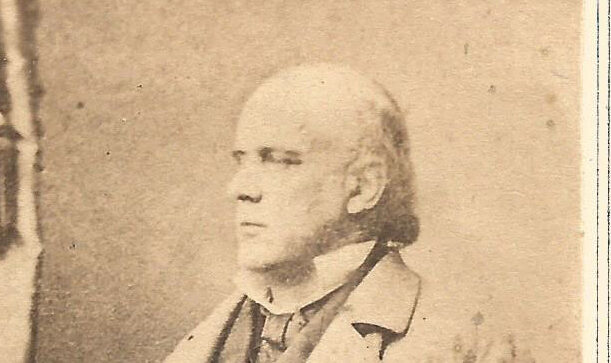 Section #17
Section #17The Republican Party emerges from an unlikely fusion of Free Soil and Know Nothing factions
- 195 – A Small Group Of Republicans Meet To Formulate Election Strategies
- 196 – After 133 Ballots The New House Selects A “Know-Nothing” As Speaker
- 197 – Georgia’s Robert Toombs Makes The “States Rights” Case For Slavery In Boston
- 198 – Pierce Delivers His Message On “The Disturbances In Kansas”
- 199 – The Republican Hold Their Formal “Organizing Meeting” In Pittsburgh
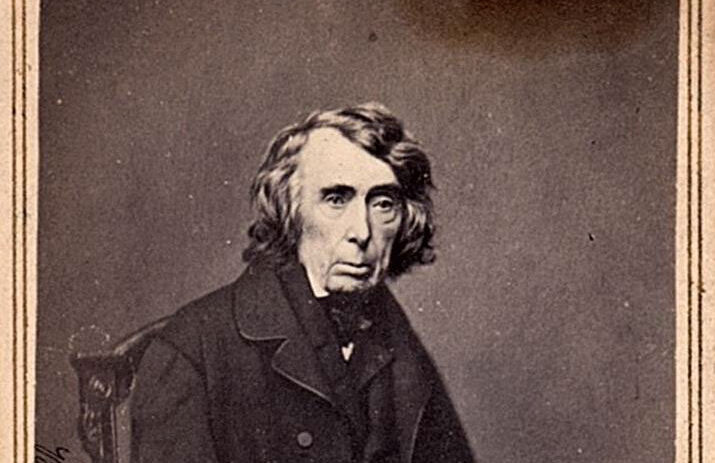 Section #18
Section #18After harsh political debates the Supreme Court’s Dred Scott decision fails to resolve slavery
- 200 – Disagreement Over “Party Goals” Divides The Know Nothings
- 201 – Douglas And Seward Debate The “Crisis In Kansas”
- 202 – The Nation Is Shocked By A Brutal Assault In The Senate On Charles Sumner
- 203 – Open Warfare Breaks Out Across Kansas
- 204 – The Political Parties Convene To Select Candidates For The 1856 Races
- 205 – The “Toomb’s Bill” Offers A Southern Compromise On Kansas But It Fails To Pass In The House
- 206 – Pierce Sends Federal Troops To Disband The Topeka Legislature
- 207 – Pierce Fires Governor Shannon Amidst Further Battles In “Bloody Kansas”
- 208 – Governor John Geary Quells The Open Warfare In Kansas
- 209 – James Buchanan Becomes America’s Fifteenth President
- 210 – John Brown Advances His Plan To Lead A Slave Rebellion In Virginia
- 211 – James Buchanan’s Term
- 212 – The Dred Scott Decision Further Divides The Nation
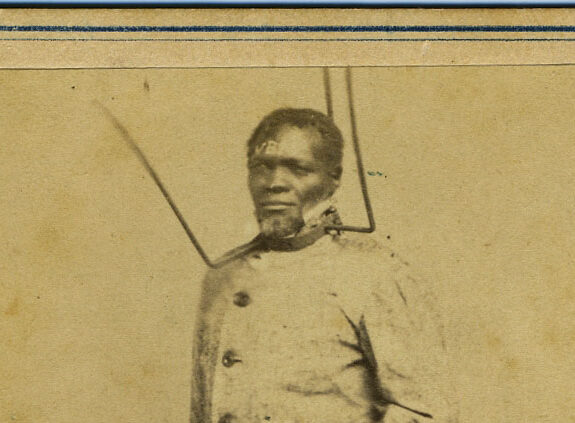 Section #19
Section #19Regional violence ends in Kansas as a “Free State” Constitution banning all black residents passes
- 213 – Governor Geary Resigns And Robert Walker Is Sent To Kansas
- 214 – William Walker’s Filibuster Of Nicaragua Collapses
- 215 – Buchanan Moves To “Clean Up Utah”
- 216 – The “Panic Of 1857” Rocks The Economy
- 217 – John Brown Recruits His First Ten Troops For His Virginia Raid
- 218 – The “Mountain Meadow Massacre” Further Inflames Anti-Mormon Sentiment
- 219 – The Free State Party Wins Official Control Over The Kansas Legislature
- 220 – The Pro-Slavery Lecompton Constitution Is Written And Governor Walker Is Sacked
- 221 – Douglas Thwarts Buchanan’s Attempt To Push Lecompton Through Congress
- 222 – Kansas Voters Reject The Pro-Slavery Lecompton Constitution But Buchanan Still Tried To Save It
- 223 – James Henry Hammond Tells The North That “Cotton Is King”
- 224 – The South’s Economic Future Hinges On The Expansion Of Slavery
- 225 – A Southerner Attacks Slavery On Behalf Of “Plain White Folks”
- 226 – The Public Views Buchanan’s Pardon Of “The Treasonous” Mormons One More Feeble Capitulation
- 227 – The “English Bill” Tries To Save The Lecompton Constitution
- 228 – The Marais des Cygnes Massacre Again Enflames Kansas
- 229 – John Brown’s Plan To Attack Harper Ferry Hits A Roadblock
- 230 – Lincoln Begins A Senate Campaign With His “House Divided” Speech
- 231 – A Slave State Designation For Kansas Ends When Voters Reject The “English Bill”
- 232 – The Lincoln – Douglas Debates Frame The National Divide Over Slavery
- 233 – Douglas Is Re-elected While Lincoln Becomes Famous
- 234 – Henry Seward’s “Irrepressible Conflict” Speech
- 235 – Republicans Win The Mid-Term House Elections
- 236 – John Brown “Emancipates” More Slaves In Missouri
- 237 – Oregon Enters The Union As A “Whites Only” State
- 238 – Wisconsin Tries To Defy The U.S. Supreme Court On A Run-away Slave Case
- 239 – John Brown Gets Ready For His Attack In Virginia
- 240 – The Free State Wyandotte Constitution Is Approved In Kansas
 Section #20
Section #20Futile attempts to save the Union follow John Brown’s Raid at Harpers Ferry
- 241 – John Brown’s “Army” Attacks Harper’s Ferry
- 242 – Respect For John Brown Grows From His Capture To His Execution
- 243 – The South Responds To The Harpers Ferry Raid
- 244 – Many Northerners Come To Regard Brown As A Martyr
- 245 – President Buchanan Deliver His State Of The Union Address
- 246 – The 36th Congress Opens Amidst The Harpers Ferry Turmoil
- 247 – A Congressional Investigation Of Harpers Ferry Solves Nothing
- 248 – The South Demands A Congressional Act Sanctioning Slavery
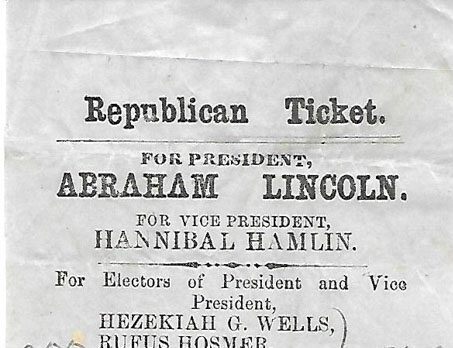 Section #21
Section #21A North-South Split in the Democrat Party leads to a Republican Party victory in 1860
- 249 – Abraham Lincoln Delivers His Famous Cooper Union Address In New York
- 250 – The Democrat Party Fractures At Its Charleston Convention
- 251 – A New Constitutional Union Party Holds Its Convention
- 252 – The Republicans Nominate Abraham Lincoln
- 253 – The Reconvening Democrats Nominate Two Separate Tickets
- 254 – The 1860 Campaign For President
- 255 – Lincoln Becomes America’s Sixteenth President
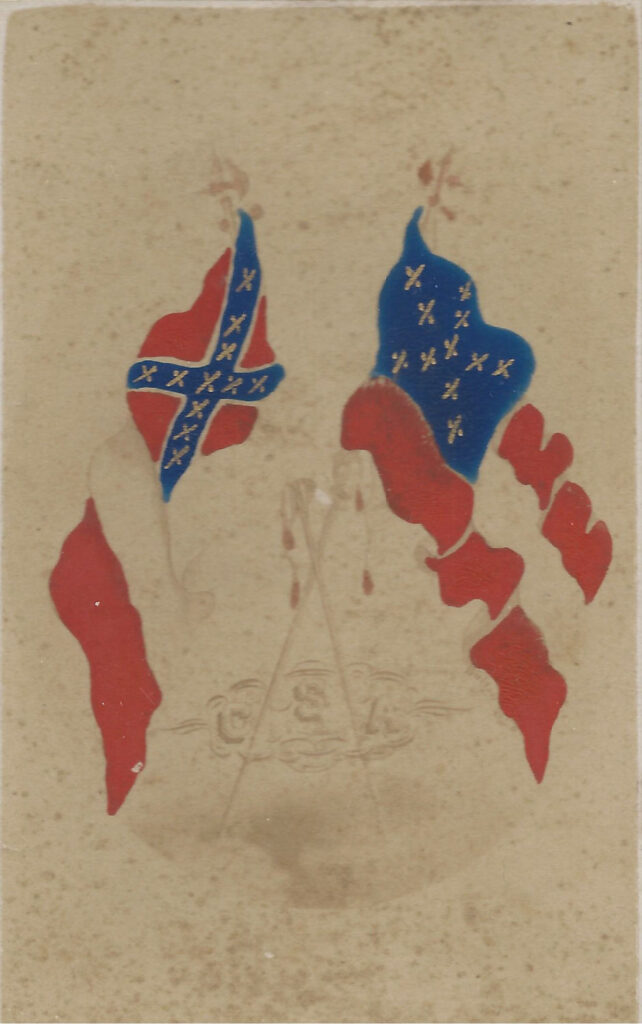 Section #22
Section #22The Southern States secede and the attack on Ft. Sumter signals the start of the Civil War
- 256 – The North Misreads The Southern Threat Of Secession
- 257 – Momentum Behind Disunion Builds In The South
- 258 – Major Robert Anderson Assumes Command Over Charleston Harbor
- 259 – Buchanan Blames “The People Of The North” For Putting The Union At Risk In His Final Congressional Address
- 260 – Howell Cobb Resigns From The Cabinet And Urges Georgia To Secede
- 261 – South Carolina Delivers An Ultimatum
- 262 – A Panicked Congress Forms Select Committees To Avoid Disunion
- 263 – South Carolina Secedes From The Union
- 264 – After The Fact, Congressional Committees Hear Compromise Proposals
- 265 – The South Begins To Gear Up For War
- 266 – Major Robert Anderson’s Heroic Move To Sumter Shocks All Sides
- 267 – The Select Congressional Committees Fail To Find A Compromise
- 268 – The Supply Ship Star Of The West Is Fired Upon At Charleston Harbor
- 269 – Three More Southern States Secede Amid Calls For Calm
- 270 – Florida Threatens To Seize Ft. Pickens
- 271 – Senate Resignations Provoke More Last Ditch Efforts To Preserve Peace
- 272 – A Northern Controlled Congress Admits Kansas As A Free State
- 273 – Pressures On Buchanan Continue To Mount
- 274 – Ex-President John Tyler’s National Peace Conference Meets In Washington
- 275 – Chapter 275 : The Confederate States Of America Are Organized In Montgomery
- 276 – CSA President Jefferson Davis Stalls For Time On Ft. Sumter
- 277 – Lincoln Delivers Confusing Messages On Route To Washington
- 278 – Tyler’s Peace Conference Is Another Predictable Failure
- 279 – Two Last Second Bills Gain Congressional Approval
- 280 – Lincoln Is Sworn In And Delivers His Inaugural Address
- 281 – The South Regards The Speech As A Declaration Of War
- 282 – Lincoln Names His Cabinet And It Debates Sumter Strategy
- 283 – Lincoln Sends Messengers To Charleston To Assess The Situation
- 284 – Lincoln Decides To Reinforce Both Ft. Sumter And Ft. Pickens
- 285 – Organizational Confusion Mars Planning For The Expeditions
- 286 – Seward Adds Confusion And Lincoln Puts Him In His Place
- 287 – Lincoln Sends Messengers To Charleston While Monitoring The Virginia Convention
- 288 – Confusion Reigns As The Federal Expeditions To The Forts Head Out
- 289 – Davis Decides To Take Sumter By Force
- 290 – Threats To Both Washington And Sumter Become Imminent
- 291 – The Battle For Ft. Sumter Is Under Way
- 292 – Ft. Sumter Ends And “Then The War Came”
- 293 – Aftermath 1861
Bibliography
While the analytics and narrative throughout the website are the author’s, credit for the factual foundations belongs with academic scholars and everyday history buffs, whose books and articles have enabled this exploration of the antebellum period. In a perfect world, the text throughout the website would include detailed cites and footnotes, recognizing the sources and origins behind all the writing, together with a detailed topical index. However, realities of time and space have prohibited these worthy outcomes. As it is, the website has been well over a decade in the making, and is already of a length that even the most curious may find challenging. Still, some basic recognition of source materials is required, and it falls into two major buckets. The first being books in the author’s personal library, collected over some five decades and accessed for both pleasure and research. The second being reliance on the truly amazing access to source documents now available from home via the internet. While a fairly complete bibliography is shown below, several books and scholars deserve special mention for having shaped whatever insights have materialized.
Our Books

Restored to Light: The Civil War and Other Military Conflicts
Here you will find a very brief overview of America’s military conflicts along with over a thousand original 19th century photographs of the soldiers who fought and of some of the battle scenes. Coverage will include the Revolutionary War, The War of 1812, various Tribal Wars, the Mexican War, the aftermath in “Bloody Kansas,” and the Civil War itself. For those interested, several other conflicts are touched on in various degrees of detail: the Waterloo Battle, Custer’s defeat at the Little Big Horn and snippets related to the Crimean War, and both the First and Second World Wars.

Restored to Light: American Life in the 1800’s
This book will introduce our diverse population, from the common men and women of all races and classes, to the more prominent figures who shaped our beliefs and values and growth as a nation. You’ll learn about our homes, schools, churches and ever changing modes of transportation. How our small towns become large cities with vibrant market-places. How capitalism and industrialization provide an economic boom and open many new ways to earn a living beyond agriculture. Also about our evolving political parties and their leaders, and trace their efforts to deal with various foreign and domestic conflicts while competing for power.
Since America’s history is marked by tragic flaws as well as towering strengths, you’ll explore the brutal experiences of the enslaved African-Americans, the root causes of racism and gender inequality, and our ruinous propensity for violence. Finally, we’ll end with a fun look at the history of our entertainment industry.
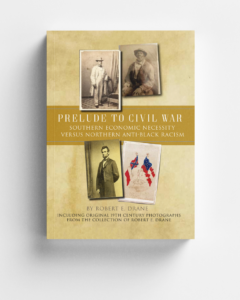
Prelude to Civil War
This book examines the key events in American history from the 1607 arrival of the British colonists through the 1775-81 Revolutionary War, the creation of a new nation at the 1787 Constitutional Convention, its amazing rise to global prominence by 1840, followed by internal insurrection and warfare in 1861. It argues that the seeds of Disunion are evident from the beginning, once the South bets its entire economic future on the ongoing expansion of a slave-based agricultural economy. This conflicts with the North’s commitment to a modern industrialized model along with its passage of racist “black codes” aimed at “cleansing” all negroes from its domain. Up until 1845 “political compromises” allow both regions to prosper, as America’s landmass crosses the Mississippi River. However, tensions accelerate after the 1846-47 Mexican War opens new western territories coveted by both sections. Southern demands to open new slave plantations are met by Northerners committed to preserving all new land for “free white men and free labor.” This outcome would end the South’s ability to auction off its inventory of “excess slaves,” the principal source of its total wealth. Efforts to find a compromise fail and Lincoln’s victory in the 1860 election (with 39% of the popular vote) results in a slavery ban in the west, secession by the South and the Civil War.
